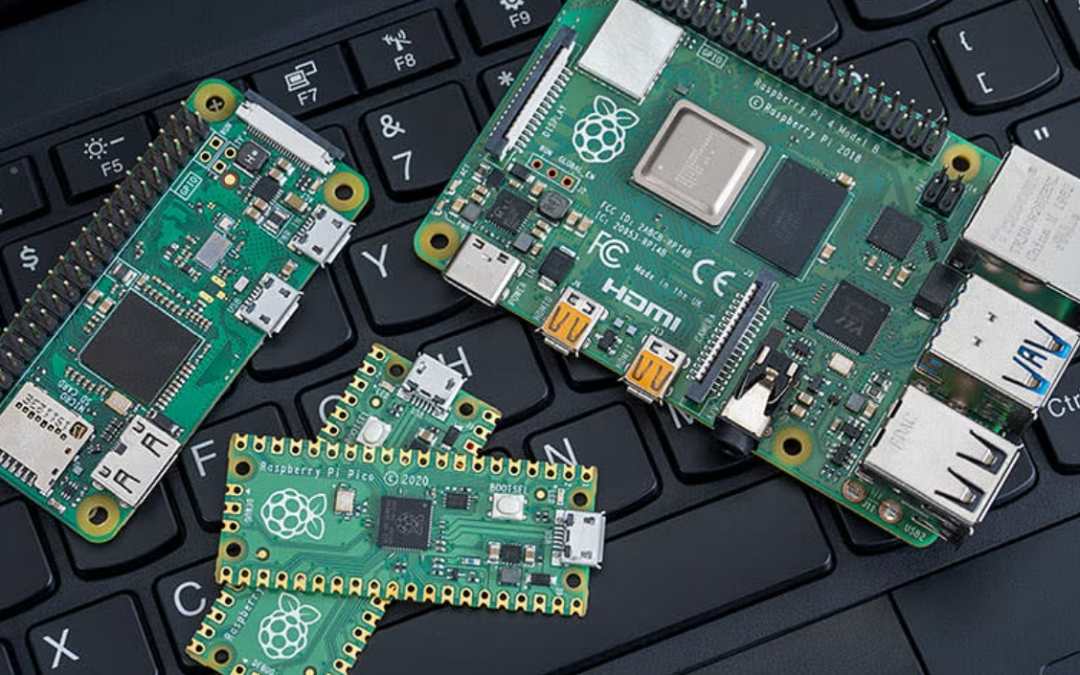Introduction
Raspberry Pi is a small, low-cost, credit-card-sized computer that was created by the Raspberry Pi Foundation in the UK. It was designed as an affordable platform for learning and experimentation with computer programming and electronics. Raspberry Pi is a versatile device that can be used in a wide range of applications, from education to home automation and robotics.
Raspberry Pi includes a range of input/output pins that can be used to connect sensors, motors, and other electronic components. It also has a built-in Wi-Fi module, Ethernet port, and HDMI output, making it easy to connect to the internet and display output on a monitor or TV. Raspberry Pi supports a range of operating systems, including Raspbian, a Linux-based OS that is optimized for Raspberry Pi.
How Does Raspberry Pi Work?
Raspberry Pi works by running programs and controlling electronic components through its input/output (I/O) pins. These pins are used to connect sensors, motors, and other electronic components to the Raspberry Pi.
When you turn on a Raspberry Pi, it boots up the operating system that has been installed on it. The most commonly used operating system for Raspberry Pi is Raspbian, a Linux-based OS that is optimized for Raspberry Pi. Once the operating system has booted up, you can use a variety of programming languages and software tools to create and run programs on the Raspberry Pi.

Raspberry Pi has a range of input/output (I/O) pins that can be used to control electronic components. These pins can be used to send signals to devices like LEDs, motors, and sensors, or to receive signals from these devices. For example, if you connect an LED to one of the GPIO (General Purpose Input/Output) pins on the Raspberry Pi, you can use a program to turn the LED on or off by sending a signal to the pin.
Raspberry Pi can also be connected to the internet through its built-in Wi-Fi module or Ethernet port. This allows you to access the internet and run programs that interact with web services or cloud-based applications.
What language does Raspberry Pi use?
Raspberry Pi can be programmed using a variety of programming languages, including Python, C/C++, Java, Scratch, and more. However, Python is the most commonly used programming language for Raspberry Pi, due to its simplicity, ease of use, and compatibility with the Raspberry Pi hardware and software ecosystem.
Features and Benefits of Raspberry Pi
Raspberry Pi is a versatile and powerful device that offers a range of features and benefits. Here are some of the most notable features and benefits of Raspberry Pi:

- Low cost: Raspberry Pi is an affordable device, making it accessible to a wider range of people, including students, hobbyists, and enthusiasts.
- Small size: Raspberry Pi is a credit-card-sized computer that can fit in the palm of your hand, making it easy to carry around and use in a range of applications.
- Input/output (I/O) pins: Raspberry Pi includes a range of I/O pins that can be used to connect sensors, motors, and other electronic components, allowing you to create a wide range of projects.
- Operating system support: Raspberry Pi supports a range of operating systems, including Raspbian, a Linux-based OS that is optimized for Raspberry Pi.
- Wi-Fi and Ethernet connectivity: Raspberry Pi includes built-in Wi-Fi and Ethernet connectivity, making it easy to connect to the internet and communicate with other devices.
- User-friendly interface: Raspberry Pi provides a user-friendly interface that makes it accessible to beginners, with a range of software tools and programming languages to choose from.
- Education and learning: Raspberry Pi is widely used in education to teach computer programming and electronics to students of all ages.
- Home automation: Raspberry Pi can be used to control lights, appliances, and security systems, making it a useful tool for home automation.
- Robotics: Raspberry Pi can be used to create robots that can perform a range of tasks, from simple movements to complex actions.
Applications of Raspberry Pi
Raspberry Pi has a wide range of applications across different fields, including education, home automation, robotics, media centers, and more. Here are some of the most notable applications of Raspberry Pi:
- Education: Raspberry Pi is widely used in education to teach computer programming and electronics to students of all ages. It provides an affordable and versatile platform for learning and experimentation.
- Home automation: Raspberry Pi can be used to control lights, appliances, and security systems, making it a useful tool for home automation. It can also be used to create smart home systems that can be controlled remotely.
- Robotics: Raspberry Pi can be used to create robots that can perform a range of tasks, from simple movements to complex actions. It provides an excellent platform for learning and experimentation with robotics.
- Media centers: Raspberry Pi can be used to create media centers that can play movies, music, and other multimedia content. It can also be used to create streaming services and internet radio stations.
- Internet of Things (IoT): Raspberry Pi can be used in IoT applications to connect devices and sensors to the internet, allowing them to communicate with each other and with cloud-based services.
- Gaming: Raspberry Pi can be used to create gaming consoles and retro arcade machines, providing a low-cost and customizable alternative to commercial gaming systems.
- Scientific research: Raspberry Pi can be used in scientific research, including data collection and analysis, remote sensing, and environmental monitoring.
Conclusion
Raspberry Pi is a small, low-cost, and versatile computer that provides an affordable platform for learning and experimentation with computer programming and electronics. It has a wide range of applications, from education to home automation and robotics. Raspberry Pi is easy to use and provides a user-friendly interface that makes it accessible to beginners. It is an excellent tool for learning, experimenting, and creating, and it has the potential to inspire the next generation of programmers and inventors.

